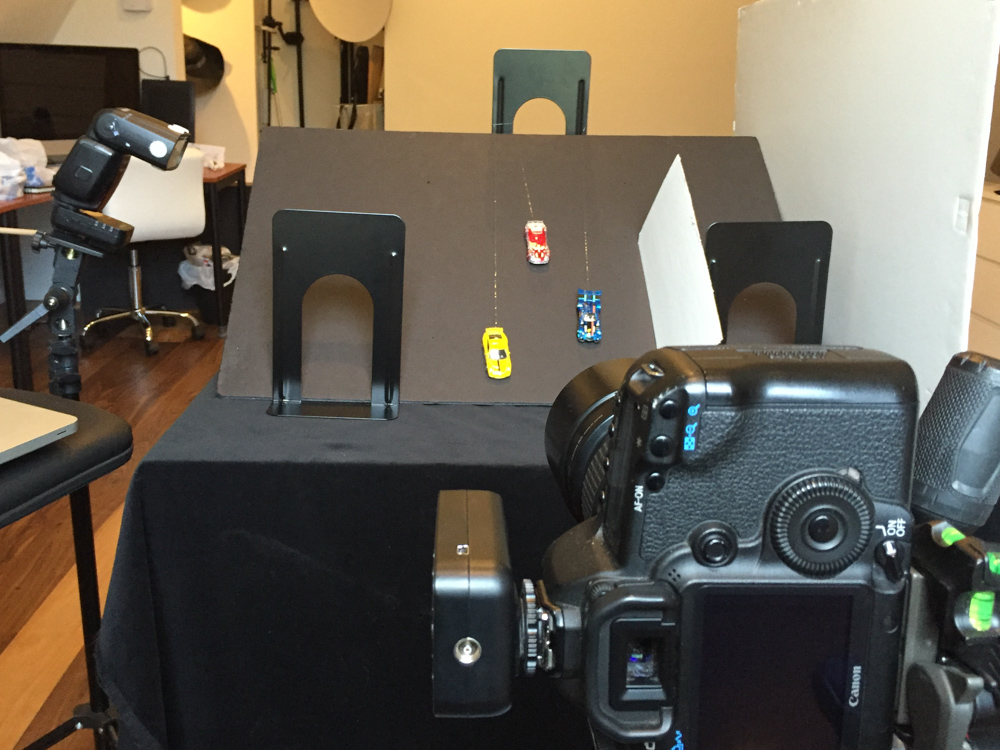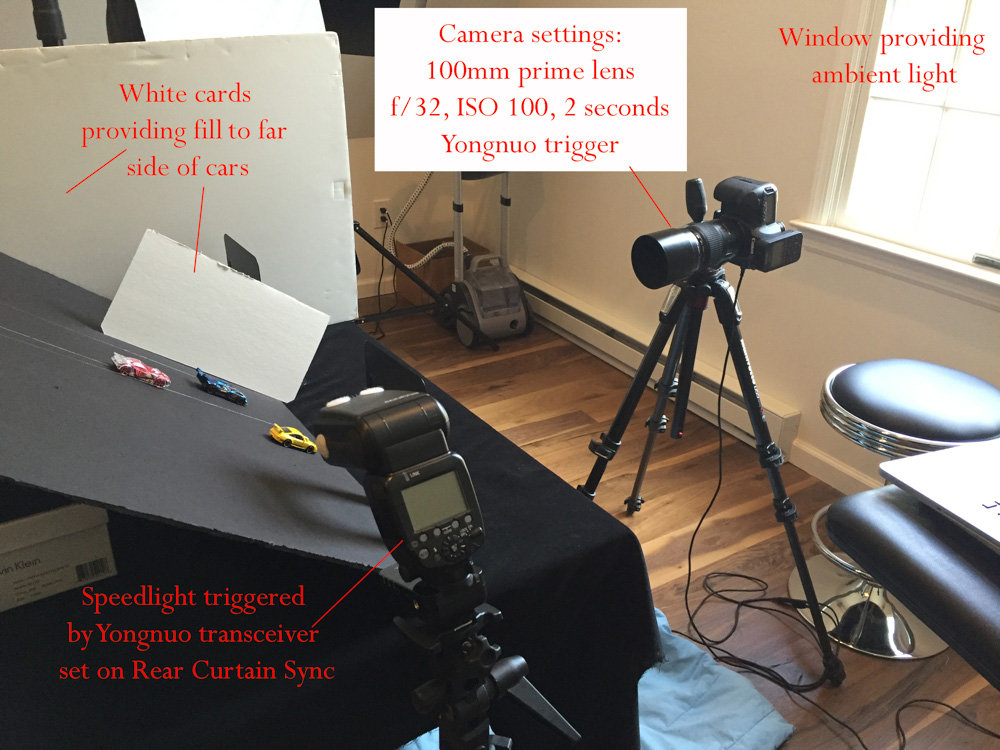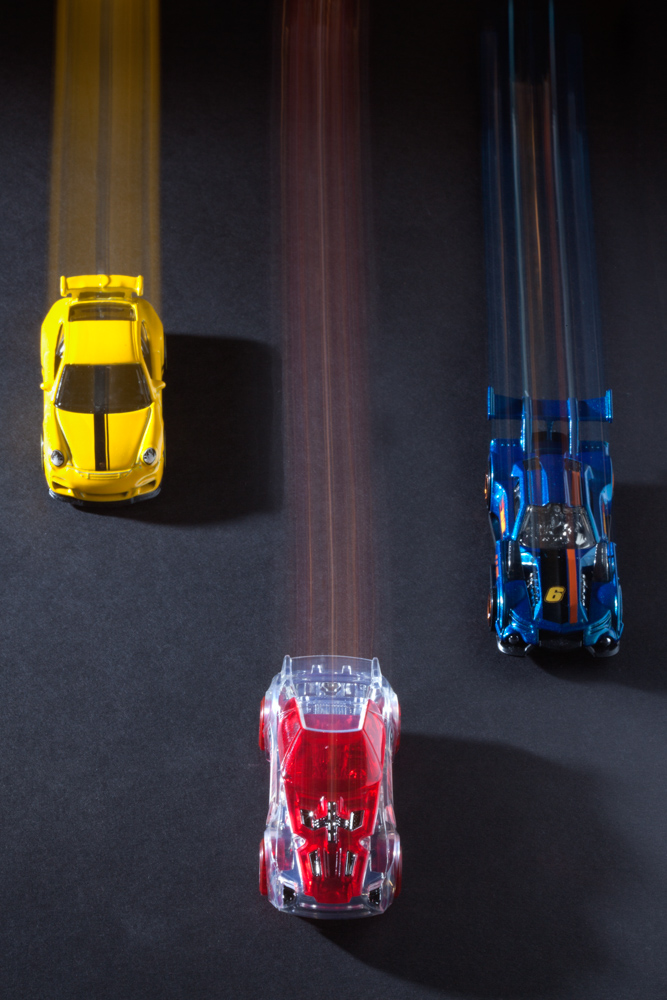Showing Motion In a Still Image
Our most recent P52 assignment was a to portray the concept of “speed.” The image was to be used in billboards and magazine ads for a local motorcycle and bicycle delivery company. I quickly came to the conclusion that I wanted to somehow show motion in a still image. I dug out some Matchbox cars from our toy bin, and set to work. I built a “hill” out of a couple of shoeboxes with a piece of black foam core resting on it. As you can see in the behind the scene (BTS) image to the right, I used two bookends at the bottom of the ramp to keep the foam core from sliding off the shoeboxes.

To imply motion and show the concept of speed, I wanted to get streaks behind each car, with the car in sharp focus at the bottom of the ramp. To create streaks, you need three things: a flash set to rear curtain sync, sufficient ambient light created by using a slow shutter speed, and a moving object.
What is rear curtain sync? Rear, or second curtain sync, is a speedlight mode where the flash fires right before the camera shutter closes. It is designated on the flash display by three overlapping triangles. In front or first curtain sync mode, the flash fires when the shutter opens. If the flash is set to front curtain sync, the car will be sharp at the top of the ramp and the streaks will appear in front of the car, which is definitely not the look I was after. Rear curtain sync allows the motion to occur and then the flash fires at the end to capture the object at the end of its journey. I used one unmodified speedlight positioned at the bottom of the ramp, as I wanted a hard shadow. I also put a white card on the far side of the scene so that some light would bounce in to fill in the shadows on the left side if the cars.
Why do you need ambient light? If you were to shoot the image with the flash as the only light source, it will freeze the motion of the car, regardless of the sync mode. Introducing ambient light into the scene provides light for the camera to track the car’s path down the ramp, showing it as motion blur until the flash fires and freezes the motion of the car. A slow enough shutter speed provides the ambient light and allows enough time for the car to traverse down the ramp. For this image, I set up my table next to a window so that it was directly behind the camera and the window light was falling directly on the ramp. This is a picture with a description of the set up:

After about 20 attempts to release the car in time for the flash to catch it at the bottom of the ramp, I decided to take chance out of the equation and I fell back on a little trick I’ve learned in P52. Fishing line. After a couple of different assignments had me throwing things around and hoping my trigger finger was fast enough to capture the object in motion, I bought some fishing line. In this particular case, I tied it to the back of the cars and was able to slowly release the car down the ramp, while also being able to control the direction of the car. I shot each car independently and blended them all together in Photoshop. All I had to do was to edit out the fishing line, which was a quick process using the healing brush. The three individual shots are below:

Here is the resulting image; does it say “Speed” to you?

There are many uses for this technique, both in and out of the studio. You can use it to capture motion with someone running or biking outdoors. Just remember that you need a slow shutter speed, which on a bright and sunny day may require the use of a neutral density filter. Experimentation is your friend with this technique, so give it a try.




